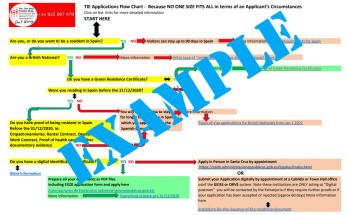British citizens may have to apply online and pay to travel to Europe , under plans being drawn up by the bloc for a visa waiver programme similar to the US system.
The proposed scheme would cover entry to the passport-free 26-nation Schengen zone – of which Britain was not a member even before Brexit, from citizens of those countries that are designated as not needing a visa to enter.
THIS DOES NOT CURRENTLY APPLY TO BRITISH CITIZENS and Brexit negotiations will ultimately decide whether this will apply to them after the UK leaves the EU, but regardless of this, the scheme is expected to be put in place for selected Non EU countries (visa-free countries) as early as next year.
What will visa-exempt travellers have to do before their travel to the EU?
Travellers will have to make an online application via a dedicated website or an application for mobile devices. Filling in the application should not take more than 10 minutes and should not require any documentation beyond a travel document (a passport or other equivalent document). In case of an inability to create an application (due to age, literacy level, access to and competence on information technology etc.) applications may be submitted by a third person.
An electronic payment of a €5 fee for each application will be required for all applicants above the age of 18. This process (and payment) will only have to be renewed at the end of the validity of the travel authorisation. The electronic payment methods will take into account technological developments and their availability in the visa-free countries in order not to hinder visa-free third country nationals who may not have access to certain payment means when applying for an ETIAS authorisation.
The automated assessment process will start after the fee collection is confirmed. The vast majority of applicants (expected to be more than 95% of all cases) will be given automated approval (when there are no hits on searched databases, the dedicated ETIAS watchlist or against clearly defined screening rules) which will be communicated to them within minutes of payment. If there is a hit or an undecided outcome of the automated process, manual handling of the application will take place by a Central Unit in the European Border and Coast Guard or by a Member State team. This can prolong the response time to the visa-exempt third country national by up to 72 hours. In very exceptional circumstances further information and steps can be asked of applicants, but in all cases a final decision shall be taken within two weeks of their application.
Of the roughly 5% of applications which produce a hit or hits, it is expected that 3-4% will receive a positive decision after ETIAS Central Unit verifies the data, with the remaining 1-2% being transferred to ETIAS National Units for manual processing.
After the decision applicants will be given a response by email with a valid travel authorisation, or a justification for the refusal.
Q&A:http://europa.eu/rapid/press-release_MEMO-16-3706_en.htm

